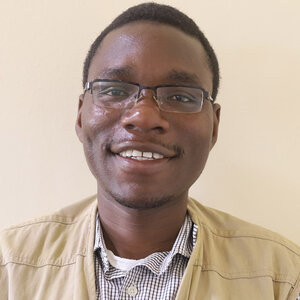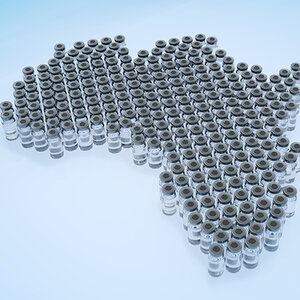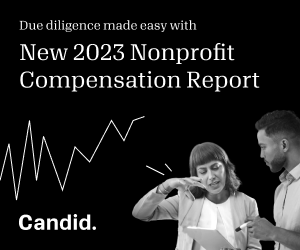Addressing cholera outbreaks in the face of climate change: Lessons from Malawi

The impact of climate-related disasters
Over the past four years, Malawi’s health system has faced the consequences of climate-related disasters, epidemics, outbreaks, and a pandemic. These included tropical Cyclone Idai in 2019, COVID-19 in 2020, and Cyclone Ana, a cholera outbreak, and a polio epidemic in 2022. Cyclone Ana, the most recent climate-related disaster, affected over 900,000 people living across more than 15 districts in Malawi. Neno district, a small area in southwestern Malawi, was one of the worst-hit areas, with more than 27,000 people affected by the storm.
There was some concern that the Cyclone Ana disaster could lead to a cholera outbreak in Malawi. Cholera, which is caused by the bacteria Vibrio Cholerae, is an acute enteric infection that causes severe diarrhea. It is spread through ingestion of the bacteria, commonly present in contaminated food, water, and sanitary facilities. If untreated, cholera can be fatal.
The extensive flooding from the cyclone resulted in damage to safe water and sanitation systems and the relocation of internally displaced people to overcrowded temporary or semi-permanent camps. This created an environment conducive to a cholera epidemic, adding to Malawi’s existing social economic and health-related risks, including poverty, lack of disease surveillance, and poor sanitation.
Partners In Health’s work on the ground
Cases of malaria were rapidly identified in many districts, and Malawi declared an epidemic in March 2022. As such, the Malawi Ministry of Health (MOH), working with various humanitarian organizations like Partners In Health (PIH), started mobilizing the global stockpile of cholera vaccines to districts identified by MOH as being at high risk.
PIH, a nonprofit organization which started working in Malawi in 2007, worked with the ministry to provide immediate support to cholera victims in Neno district, where more than 90 cases were reported by the end of May. PIH supported MOH to mobilize urgently needed care and erect tents that served as cholera treatment units, construct additional sanitation facilities for cholera patients, and provide medication and supplies.
In addition, PIH worked with MOH to identify and train staff to work in the treatment units. Leveraging a network of over 1,200 community health workers (CHWs), PIH helped disseminate cholera prevention messages, re-initiate contact tracing, and conduct community mobilization, procurement, and distribution of chlorine in the affected areas.
While MOH and the World Health Organization (WHO) mobilized vaccines for Neno, resources were needed to support vaccine administration, and PIH provided financial and technical support—including microplanning, transportation of vaccines to the district, community mobilization, engagement and training of local leaders, healthcare worker trainings, and logistics. Between August and September 2022, first and second rounds of oral cholera vaccination were administered to 127,505 and 99,992 individuals, representing 85 percent and 71 percent of the target, respectively.
The vaccination program is ongoing, and many people have seen the importance of getting the vaccine. “I got a second dose of vaccine for myself and my daughter today so that we can protect ourselves from getting very sick from cholera,” said one client from one of the health centers in Neno. “Everyone in my family is now accessing the second dose.”
Lessons for future epidemic response efforts
We learned several lessons from our cholera response efforts in general and oral cholera vaccine administration work in particular. Through PIH’s longstanding work in Neno district and by working with MOH on the ground, we were able to assess the extent of the challenge and the gaps where support was urgently needed and identify practical and evidence-based ways to support in the response. Here are our recommendations for actors supporting epidemic response efforts:
Having a relatively large implementation team on the ground ensured quick community and facility-based responses to the epidemic. In our case, PIH had a clinical team that provided direct patient care, monitoring, and evaluation that supported data collection and operation teams managing procurement and logistics. Our community health workers provided communities with education and supported the distribution of chlorine. Lastly, social mobilization teams worked to disseminate messages in the community.
In addition to our work in Neno district, PIH’s policy and partnership teams engaged relevant national teams, including the Public Health Institute of Malawi, to increase awareness of actions taken in Neno district and advocate for the acquisition of cholera vaccines. A multi-pronged approach to tackling epidemics, with teams working locally and nationally, is needed to successfully address the burden of epidemics.
Finally, the flexibility of funding from PIH allowed for an effective response to cholera epidemic. PIH was able to reallocate resources immediately and direct them to cholera response and the oral cholera vaccination campaign. We encourage organization to be flexible with funding and allow for reallocation of resources in case of emerging disasters. This is enabled by funders allowing organizations to channel funding toward disasters whenever need arises.
Cholera cases continue to increase in Malawi and, as of September 11, 2022, 2,479 cases and 85 deaths have been reported in 19 districts. Currently, the disease is active in 16 districts. However, in Neno, cholera is currently under control, and the last case was reported on July 23, 2022. PIH will continue to collaborate and offer flexible support to MOH as one way of addressing the burden of diseases across Malawi.
Chiyembekezo Kachimanga is the chief medical officer for Partners In Health in Malawi. He has been working for PIH for over 10 years.







